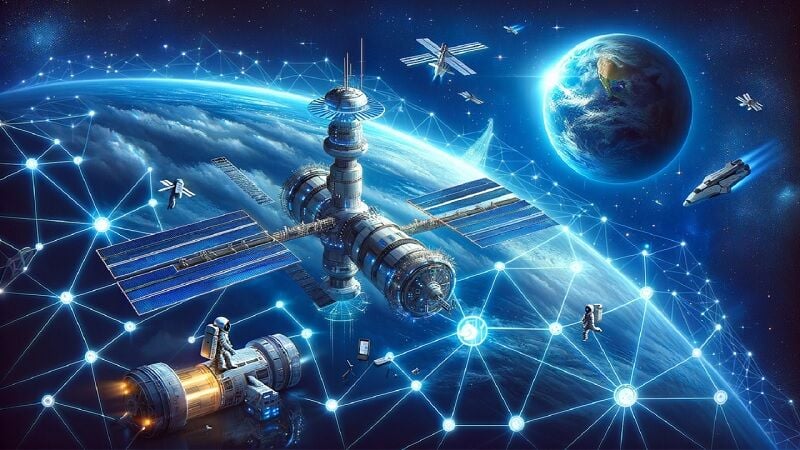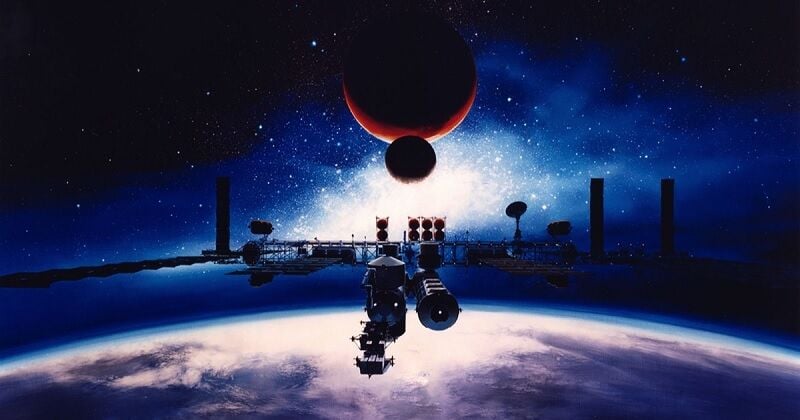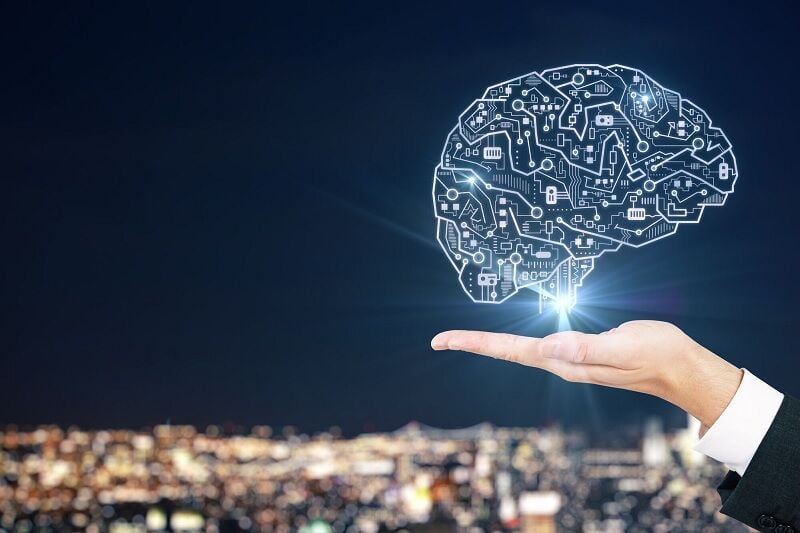Exploring the potential of AI in space exploration

Envision a forthcoming era where artificial intelligence enhanced spacecraft traverse the cosmos. This is not a concept from a science fiction narrative, it represents the reality we are progressively approaching as artificial intelligence merges with space exploration. The incorporation of AI in celestial missions is not solely about enhancing efficiency, it is about extending the limits of feasibility, thereby transforming our methods for universe exploration.
Nonetheless, such progression brings intricate ethical considerations to the forefront. What repercussions could this yield on our comprehension and experience of space exploration.
The role of AI in modern space exploration

AI plays a transformative role in space exploration, facilitating data-driven advancements and shaping futuristic mission strategies. Let us delve into how exactly AI shapes up against the vast spectacle of outer space.
Autonomous technologies and navigation
AI has been a significant contributing factor in the realm of autonomous technologies and navigation in space. Its journey into space navigation started with rovers. Equipped with sensors, these autonomous rovers could detect environmental hazards – rocks, craters and other features on Mars. The integrated AI would then analyse this data to plot a safe path, avoiding any obstacles, and exemplifying AI’s potential in enhancing mission safety.
AI’s role in studying the Sun’s interaction with other celestial bodies while withstanding extreme temperatures marks it as a critical tool in understanding our cosmic neighbourhood.
Robotics and operations on other planets
Equipped with cutting-edge AI, rovers like the Spirit and Opportunity, initially landed on Mars in 2004, and brought with them autonomous exploration technology. Utilising AI’s potential to parse through massive volumes of data, the rovers could identify scientifically significant images prioritising communication bandwidth.
NASA’s ongoing collaboration with SSL (formerly Space Systems Loral) marks yet another milestone in exploiting AI’s potential in enabling deep space exploration beyond our solar system, hinting at an exciting future where we would possibly have AI space assistants on interstellar missions.
Enhancing data analysis and interpretation
AI’s unparalleled proficiency in dealing with gigantic volumes of data marks it as an indispensable tool in space exploration. Machine-learning algorithms have been extensively applied in analysing data from space-based instruments. They have been instrumental in spotting patterns, optimising efficiency, and detecting anomalies that might otherwise go unnoticed in manual investigation.
As we further explore the potential of AI in space exploration, these practices will significantly speed up data interpretation, thereby accelerating the pace of cosmic exploration and our understanding of the universe. Overall, AI’s impactful role in modern space exploration goes far beyond what is usually envisioned, assuring us of an exciting future filled with cosmic revelations.
Artificial intelligence’s critical contributions

Improving spacecraft design and performance
Artificial Intelligence has rendered remarkable enhancement in both the design and functionality of spacecraft. To illustrate, an AI software known as AEGIS, integrated into NASA’s Perseverance rover, has the ability to independently prioritise scientific objectives and perform data acquisition, thereby augmenting mission efficiency. This technological integration is not exclusive to NASA as the European Space Agency (ESA) has embraced AI-powered autonomous navigation systems, enabling their rovers to traverse through terra incognita autonomously. Furthermore, the AI technology finds application in AI-driven scheduling, optimising downlink time from the rovers.
Role in astronaut health and safety
The paramountcy of astronaut health and safety in space missions is indisputable and AI has profoundly contributed to this aspect as well. An exemplary instance of such a contribution is the Crew Interactive Mobile Companion (CIMON), an AI-based assistant created by Airbus, IBM, and the German Space Agency (DLR). CIMON leverages voice recognition, facial recognition, object recognition, and natural language processing to aid astronauts execute complex tasks such as assembling equipment or providing guidance.
Current and future challenges for AI in space

Advancements in AI technology continue to influence space exploration, yet several challenges persist that require extensive research to mitigate.
Technical limitations and reliability factors
AI, notwithstanding its potential for exploring space, encounters technical constraints. Space probes must withstand extreme conditions, not limited to temperatures up to 2500°F in a mission like the Parker Solar Probe’s exploration of the Sun’s atmospheric corona. Ensuring the onboard AI system’s reliability under these conditions, especially when it’s 4 million miles away, is not an easy task.
AI also confronts dependability factors. Autonomous navigation systems onboard Mars rovers, such as that on NASA’s Perseverance and the European Space Agency’s rovers, must offer unwavering accuracy even in unknown terrains. Here, AI-driven scheduling optimises rovers’ downlink time, but any glitches could misdirect operations.
Additionally, the onslaught of space debris adds to the difficulty. With over 13,000 orbiting fragments tracked by the U.S. Space Surveillance Network aloft, saturation of the Low Earth Orbit raises concerns for the safe operation of AI-enabled satellites.
Integration with human tasks and decision-making
Space tasks often exhibit an intermingling of machine and human intelligence. The vital balance between AI software like AEGIS which prioritises scientific targets autonomously, and human decision-making remains delicate. One of the biggest challenges lies in ensuring AI systems can effectively learn from and complement human tasks, thus deeply integrating into not just the logistical, but also the philosophical fabric of space exploration.
So you have seen the transformative power of AI in space exploration. It is reshaping spacecraft design, revolutionising astronaut health management, and accelerating planetary research. Yet, it is not without its hurdles. Technical limitations in harsh space conditions and reliability issues in autonomous systems are real challenges. Ethical questions around AI decision-making responsibility, particularly in space law, are yet to be fully addressed. And let us not forget the delicate dance between AI and human judgement in space tasks. It is clear that regulations and effective integration are key. As we propel further into the cosmos, overcoming these obstacles becomes more crucial. It’s through this that we can truly tap into AI’s potential, pushing the boundaries of what’s possible in space exploration.
You can also check out about cybersecurity trends and threats in 2024. The crucial role that Artificial Intelligence and automation play in determining cybersecurity trends is becoming increasingly evident, leading to transformation across various dimensions of cybersecurity operations. Ranging from threat detection to predictive analytics, solutions powered by AI are revolutionising the methodology employed to counter these digital menaces.
Latest Thailand News
Follow The Thaiger on Google News:


























